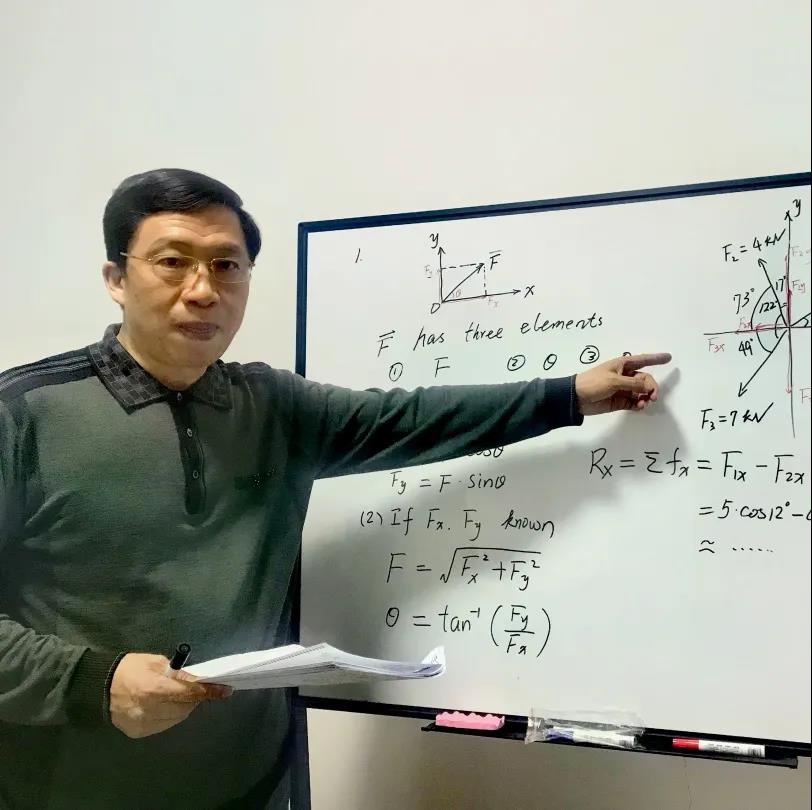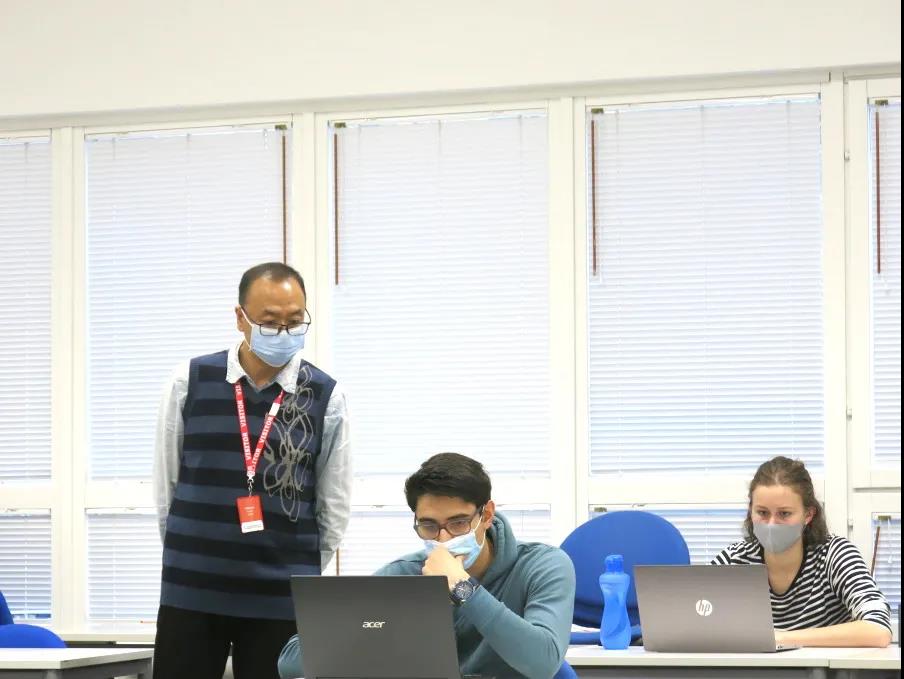On 6 September 2021, the first teachers from Finland Campus of HEBUT started their teaching in Finland. What are the differences of higher education between China and Finland? What did you gain from teaching in Finland and what challenges did you face? Let's hear what the teachers in Finland say!
Professor Shi Baojun, School of Mechanical Engineering

Teaching in Finland is both a new challenge and a unique learning opportunity for teachers and students. For example, the course "Engineering Mechanics (I)" is taught by three teachers. The main teacher is responsible for the lecture and the demo lecture, and the other two teachers are responsible for the small group exercises and the correction of homework and examination papers. Each teaching unit is usually arranged with 6 groups of exercise lessons, each group with around 20 students, to ensure that each student has sufficient time to interact with the teacher, which requires a great deal of repetitive and well-knit teaching and guidance. In addition, as students can choose their teachers and lesson times for the exercise classes, there is a certain competition between the teachers to improve their teaching in order to attract more students. The three teachers have a different division of labour and work closely together. Students gain theoretical knowledge in the large classes, and then apply it in small classes with well-designed exercises, with one-to-one or one-to-many targeted guidance from the teachers, thus ensuring efficient teaching.
Not only are the students from all over the world, but so are the teachers. In addition to employing foreign teachers, most of the teachers at the Finland campus, whether from LUT or HEBUT, have studied in the USA, Europe or other countries. Teachers from different countries, with different educational and cultural backgrounds, will be in charge of one course, from the design of the syllabus, the selection of teaching content, the use of teaching methods, the development of assessment methods, the implementation of the teaching process, etc. The teachers discuss and learn from each other, which is very beneficial to expand their horizons, adopt to different teaching models and teaching concepts, develop international communication and cooperation, and improve their own teaching ability.
Professor Xu Zhihong, School of Artificial Intelligence

Teaching at the Finland campus places great emphasis on the development of students' reading skills and critical thinking. In the Software Engineering course, students do a lot of reading outside of class, in addition to exercises and tests. Teachers will list classic articles, case studies or cutting-edge papers related to the course content and ask students to read them carefully and write reports. There is also peer assessment and students are encouraged to present their own ideas. Students have free online access to a wide range of original English textbooks or papers through the e-library, which has a positive effect on improving students' reading skills and broadening their academic horizons.
In addition, Chinese and foreign students will invariably compare and influence each other in the same classroom. For example, international students are relatively more expressive and dare to question authority and then engage in equal communication and discussion. However, as time goes on, more and more Chinese students are also putting their hands up and expressing themselves courageously during group tasks or quiz time. Meantime, students come from different countries and have more or less different learning backgrounds and approaches. When teachers explain exercises in the classroom, they invite different students to come up and present, and there are also group tasks and students' mutual evaluation. Through these ways, Chinese and foreign students question each other and communicate naturally, which is very conducive to the development of students' critical thinking.
Zhou Han, School of Science

The teaching at the Finland Campus is beneficial for developing students' independent learning skills. A powerful teaching platform and detailed course materials provide students with a guarantee of independent learning. Through the Moodle system, students can view the lecture notes a week in advance, pre-study before class, and watch unlimited replay of the course after class. For content that they do not understand, students can either ask the teacher for advice through exercise classes, or discuss with other students, or even figure out it on their own.
Bi Xiaobo, School of Artificial Intelligence

The teaching at the Finland Campus places more emphasis on process assessment. For example, in the Computer Programming course, students' grades are made up of class attendance, assignments, 5 unit tests, 2 projects and a final exam, of which the final exam only accounts for 30%. Students have more freedom in their studies, but the clear and detailed process assessment methods place higher demands on students' self-management, and students' class attendance, motivation and initiative in their studies, and completion rate of assignments are all significantly improved.
The Finland Campus integrates the characteristics of higher education training in China and Finland, in possession of advanced educational concepts, high quality educational resources and a highly international social environment. With more and more HEBUT's teachers going to Finland, HEBUT and LUT University will be able to communicate and cooperate on a deeper and broader level, and work together to cultivate international talents with an international outlook, advanced technology, multiculturalism and outstanding employment competitiveness.